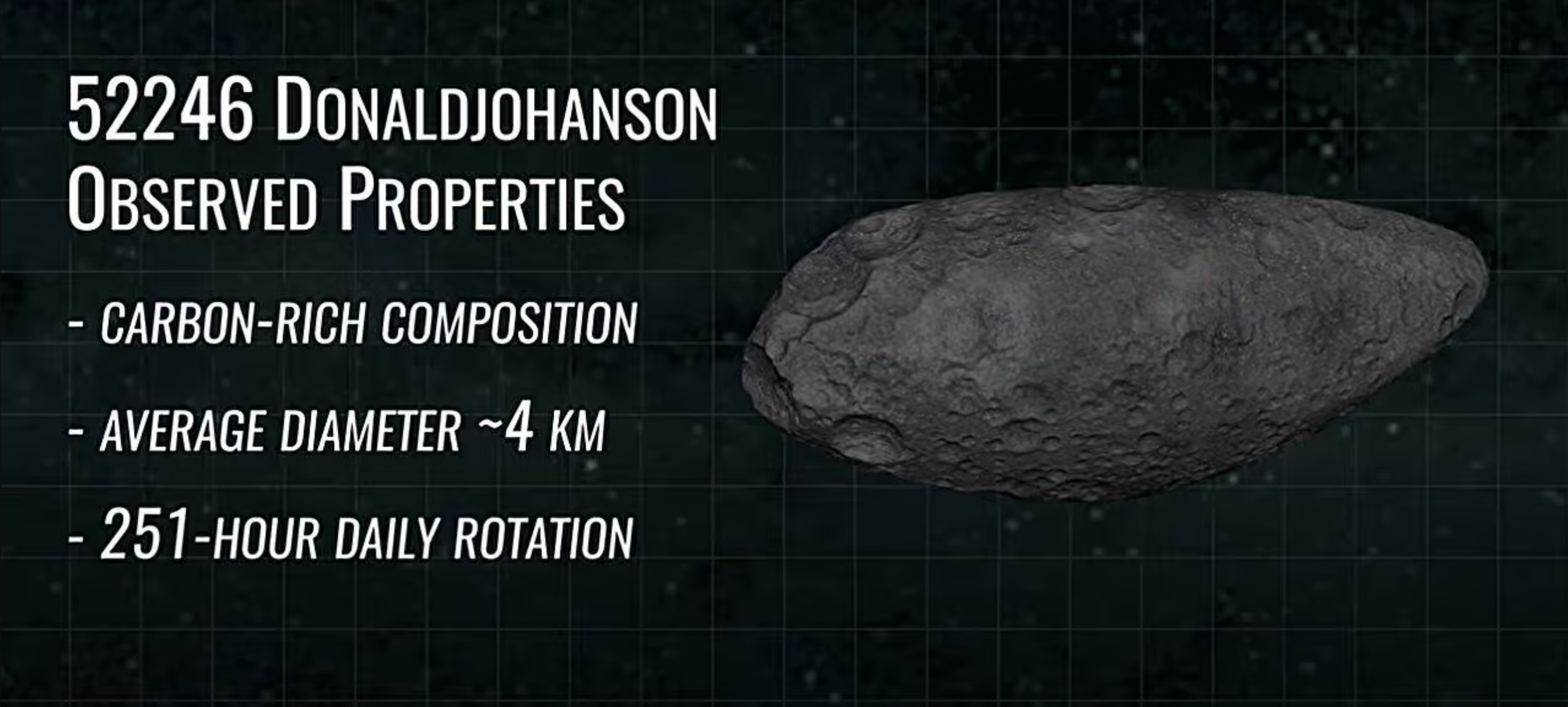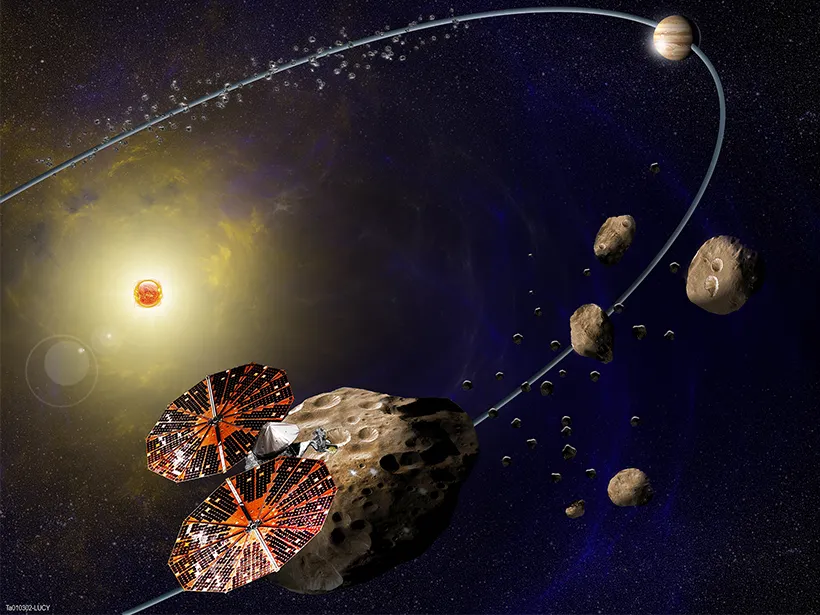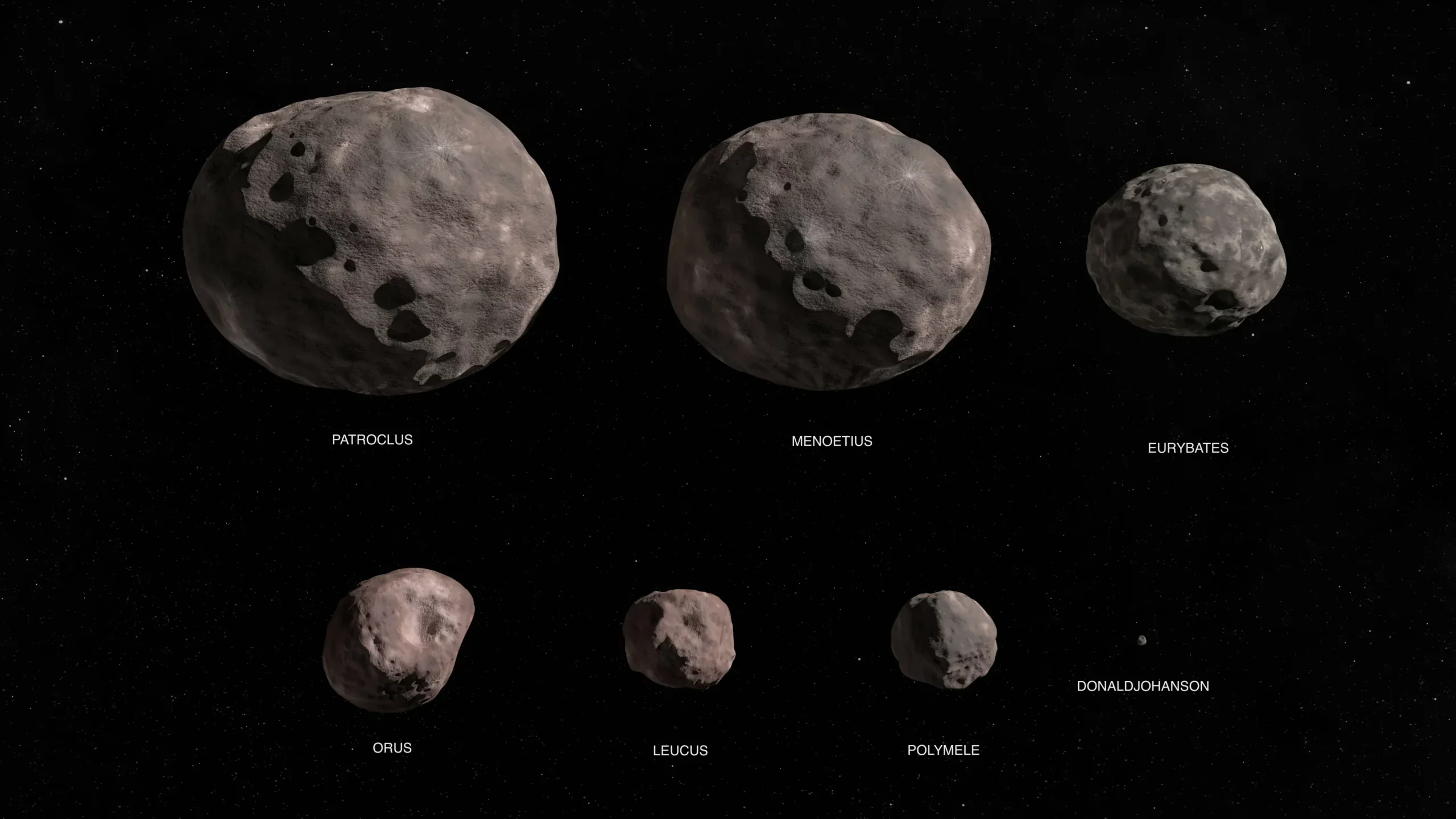NASA’s Lucy spacecraft is closing in on its second close encounter with an asteroid, expected to happen on April 20, 2025. This pass marks another key step in a long journey that began in 2021 and will continue for years as Lucy travels toward a rare set of asteroids sharing Jupiter’s orbit. The mission aims to study the Trojans—primitive leftovers from the solar system’s early days.
Before reaching those distant targets, Lucy is flying through the main asteroid belt. This zone lies between Mars and Jupiter and is, on average, nearly three times farther from the Sun than Earth. These early encounters give mission scientists a chance to test Lucy’s systems before it arrives at its main destination.
During its first test flyby in November 2023, Lucy revealed a surprise. The small asteroid Dinkinesh turned out to have a moon, later named Selam. That unexpected discovery highlighted how little is known about these ancient objects. Now, Lucy is ready for its next rehearsal with another space rock—Donaldjohanson.

Donaldjohanson is a carbon-rich asteroid about 4 kilometers wide. It likely formed from a violent collision roughly 150 million years ago, when Earth was still ruled by dinosaurs. Scientists believe this asteroid is one of the youngest objects ever visited in the main belt. Its dark surface may hold clues about the conditions of the early solar system and help explain how planets formed.
Lucy’s closest approach will bring it just 960 kilometers from the asteroid. That’s about the distance from London to Berlin. The spacecraft will begin tracking the object 30 minutes beforehand. This will temporarily shut off communication with Earth, as Lucy’s antenna must point toward its target instead of home.
While tracking the asteroid, Lucy will rely on its automated terminal tracking system to keep Donaldjohanson in view. Three scientific instruments will observe the surface during the approach: a high-resolution black-and-white camera called L’LORRI, a color camera and infrared spectrometer named L’Ralph, and a far-infrared spectrometer known as L’TES. These tools are designed to operate in dim light—25 times darker than sunlight near Earth.
Related Stories
That’s why this flyby is more complicated than the first one. Unlike with Dinkinesh, Lucy will stop tracking 40 seconds before closest approach. The intense sunlight reflecting off Donaldjohanson could damage the cameras if they look too close to the Sun.
Michael Vincent, encounter phase lead at the Southwest Research Institute in Boulder, explained the risk in vivid terms. “If you were sitting on the asteroid watching the Lucy spacecraft approaching, you would have to shield your eyes staring at the sun while waiting for Lucy to emerge from the glare,” he said. “After Lucy passes the asteroid, the positions will be reversed, so we have to shield the instruments in the same way.”
Fortunately, this challenge is unique to this encounter. For Lucy’s future visits to the Trojans, sunlight won’t be a problem, and the spacecraft will be able to collect data throughout the entire pass.
After the flyby, Lucy will rotate its solar panels back toward the Sun. It will take about an hour to reestablish contact with Earth.

Even after Lucy finishes collecting data, mission controllers will need patience. That’s because the spacecraft is now about 80 million kilometers—or nearly 50 million miles—from Earth. At that distance, it takes 12.5 minutes for a signal to travel one way. So when a command is sent, there’s a 25-minute round-trip delay before a reply comes back.
“One of the weird things to wrap your brain around with these deep space missions is how slow the speed of light is,” said Vincent. When scientists ask for data to be sent back, they won’t see pictures until nearly half an hour later.
Once the spacecraft’s systems are checked and confirmed to be healthy, the process of sending data begins. It will take several days for all the science information from the flyby to be transmitted back to Earth.
This long process is worth it. Every asteroid holds secrets about how the solar system formed. Each encounter offers a new chance to unlock ancient stories written in rock and dust.

“Every asteroid has a different story to tell, and these stories weave together to paint the history of our solar system,” said NASA’s mission scientist Tom Statler. “The fact that each new asteroid we visit knocks our socks off means we’re only beginning to understand the depth and richness of that history. Telescopic observations are hinting that Donaldjohanson is going to have an interesting story, and I’m fully expecting to be surprised – again.”
Although Donaldjohanson is not one of the Trojans, this encounter plays an essential role. It lets scientists test the full range of Lucy’s instruments and prepare for the more distant targets that lie ahead.
The upcoming Trojan flybys will give a deeper look into the ancient past. These asteroids move in stable positions around Jupiter and may contain some of the oldest, untouched material in the solar system. By visiting several of them, Lucy will help scientists better understand how the solar system evolved and how Earth’s building blocks came to be.
This long mission depends on many parts working together. The spacecraft was built by Lockheed Martin Space in Colorado. It’s guided through space by teams from NASA’s Goddard Space Flight Center, KinetX Aerospace, and the Johns Hopkins Applied Physics Laboratory. Instruments were developed by groups across the U.S., including Arizona State University and Southwest Research Institute.
Lucy is the thirteenth mission in NASA’s Discovery Program. That program focuses on low-cost, high-impact missions that explore big questions in space science.
With its second close approach just days away, Lucy continues to build momentum. Each asteroid flyby adds a new layer to our understanding of space, helping scientists look back in time and piece together the grand story of how the solar system began.
Note: The article above provided above by The Brighter Side of News.
Like these kind of feel good stories? Get The Brighter Side of News’ newsletter.
The post NASA’s Lucy prepares for second asteroid flyby on the road to Jupiter appeared first on The Brighter Side of News.